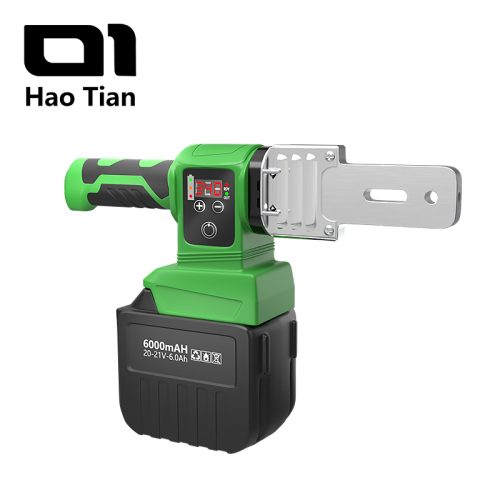In plumbing and plastic pipe installation, tool selection directly affects project efficiency, labor cost, and welding precision. One of the most common decisions for contractors and installers is choosing between a cordless PPR welding machine e un corded PPR welding machine.
Both machines melt and fuse Polypropylene Random Copolymer (PPR) pipes to create a strong, leak-proof joint that withstands pressure and temperature. However, the power source changes performance, workflow, and total cost of ownership.
How PPR Welding Machines Work
Both cordless and corded welders heat the pipe and fitting to a specific welding temperature (typically around 260°C). Once softened, the pipe and fitting are joined to form a welded connection.
The welding principle is the same.
The difference is power delivery — continuous AC power vs. battery power.
Corded PPR Welding Machine: Higher Power and Lower Cost
A corded PPR welder is plugged into an electrical outlet. Because it runs on direct AC power, it delivers a higher wattage output, which means faster heating and a more stable temperature. This makes it ideal for long welding sessions and large-scale projects.
Advantages of Corded PPR Welders
- Higher power (more wattage)
Faster heat recovery between welds; consistent temperature that won’t drop during continuous welding. - Designed for heavy-duty use
Can operate for hours without interruption — no charging, no battery swapping. - Lower purchase cost
Same welding size (e.g., 20–63 mm), corded machines are cheaper because no lithium battery is included.
Limitations of Corded Welders
- Mobility depends on available power outlets
- Power cables can slow workflow in tight or cluttered spaces
Corded PPR welders are typically used on construction sites where productivity and continuous output matter more than mobility.
Cordless PPR Welding Machine: Mobility and Flexibility
cordless PPR Welding Machine is powered by a rechargeable lithium battery. Installers choose it for convenience — especially in places where power outlets are not accessible.
Advantages of Cordless PPR Welding Machine
- True mobility
Work in ceilings, rooftop installations, or remote sites without electricity. - Cord-free operation
No cable management, fewer tripping risks, smoother workflow. - Lightweight and easy to maneuver
Ideal for overhead and confined-space welding.
Limitations of Cordless Welders
- Lower wattage output compared to corded models
Heating may be slower, particularly on larger pipe diameters. - Limited battery runtime
Requires charging or battery swapping during long projects. - Higher purchase cost
Lithium batteries increase the product price and long-term replacement cost.
Cordless PPR Welding Machine are most useful for maintenance work, mobile service projects, and scattered installation points.
Power Output Difference (Most Important Performance Factor)
- Corded machines have higher wattage → faster heating and more stable temperature
- Cordless machines have limited wattage → slower heating, especially when welding continuously
For installers who weld for long hours, wattage output determines efficiency.
Which One Should You Choose?
Choose Corded if you need:
- higher power output,
- continuous welding without interruptions,
- lower equipment cost.
Choose Cordless if you need:
- mobility and flexibility,
- quick repairs or overhead welding,
- freedom from cables.
Many contractors eventually use both:
Corded for main project installation, cordless for finishing and hard-to-reach areas.
Final Decision
Both machines can deliver strong welds. The choice depends on how you work:
Corded = more power, lower price, continuous operation
Cordless = more flexibility, better mobility, higher convenience
If the job requires high power and long working hours, choose corded.
If the job requires movement, choose cordless.









